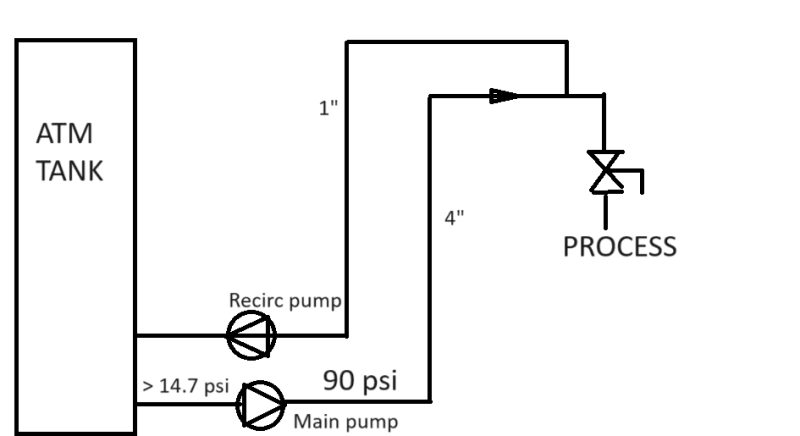Hello everyone,
It's my first post here so my apologies if I'm in the wrong section.
I am designing the plumbing of an industrial plant and would like your opinion on the following concept:
I have a hot water storage tank at atmospheric pressure with booster pumps to pump it to the plant process.
There is a fair amount of distance between the tank and the point of use and the process doesn't use hot water all day long so there is periods of time where the hot water just stand still in the pipes. So in order to have hot water ready when the valve open I have to recirculate somehow.
Should I just plug a smaller pipe at the end of the main line and connect it to the atmospheric tank and let the booster pump run 24/7 or is there a better solution?
Thanks for your help
It's my first post here so my apologies if I'm in the wrong section.
I am designing the plumbing of an industrial plant and would like your opinion on the following concept:
I have a hot water storage tank at atmospheric pressure with booster pumps to pump it to the plant process.
There is a fair amount of distance between the tank and the point of use and the process doesn't use hot water all day long so there is periods of time where the hot water just stand still in the pipes. So in order to have hot water ready when the valve open I have to recirculate somehow.
Should I just plug a smaller pipe at the end of the main line and connect it to the atmospheric tank and let the booster pump run 24/7 or is there a better solution?
Thanks for your help

